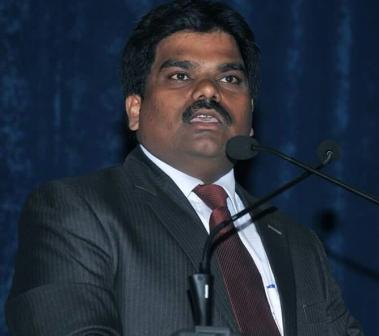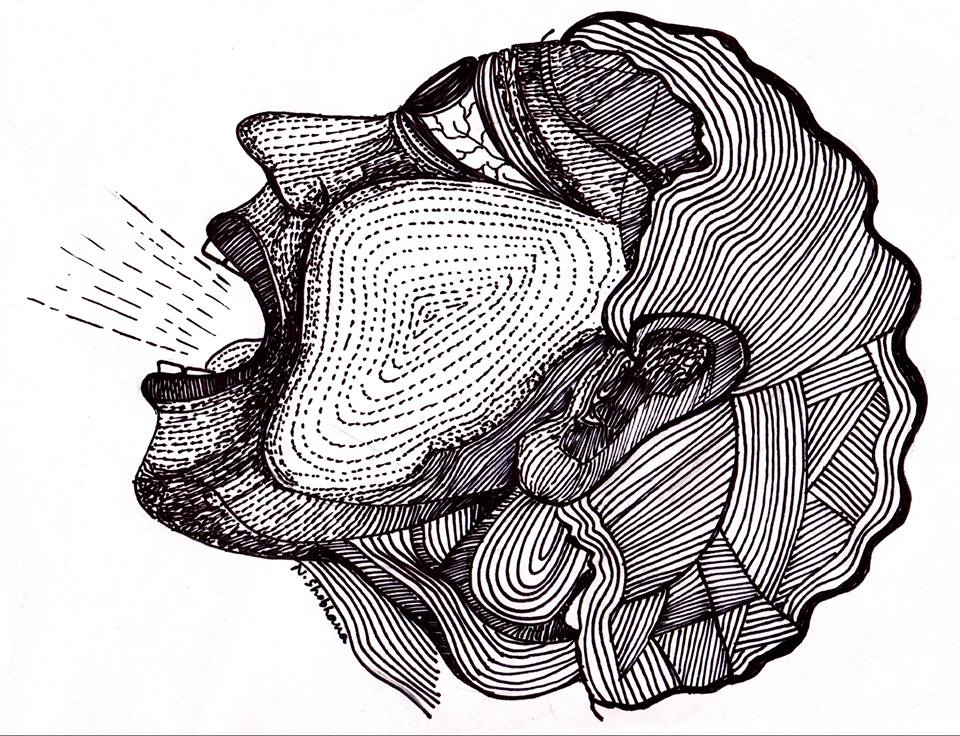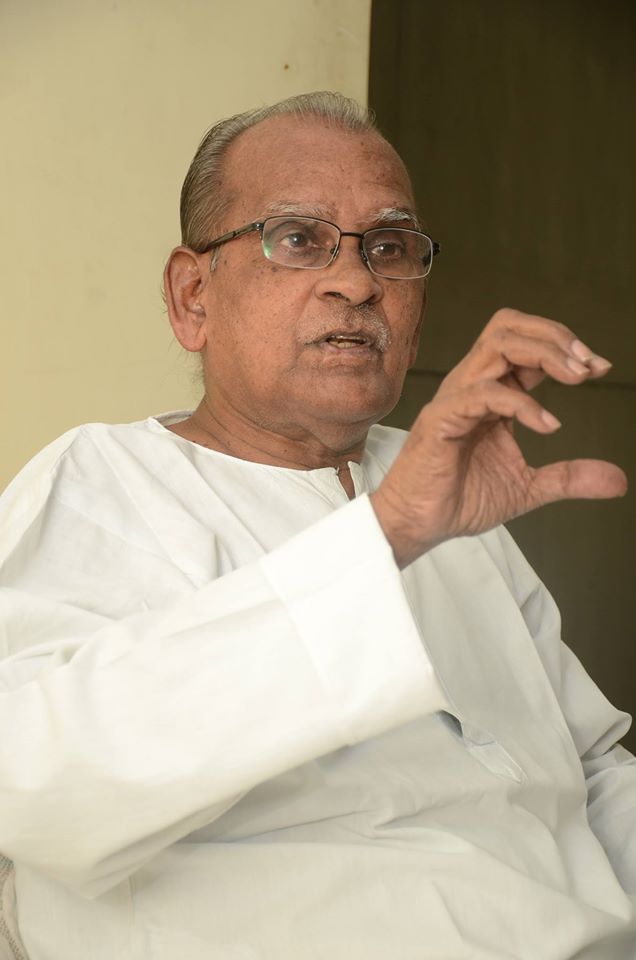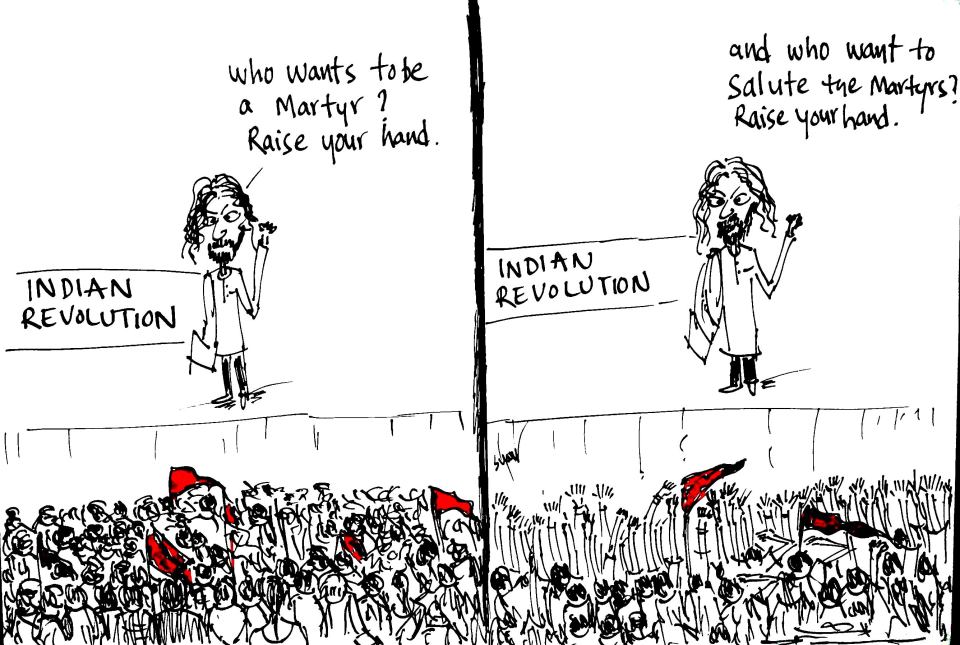Hariram A
 Indian history is a history of bigotry, it is filled with the loads of lies and misinterpretations. These lies have become the base for the exploitation of millions of indigenous communities in this country. But, many great souls fought against the system which was created by these bigotries, and were successful in educating the exploited and rectifying the system to some extent with some practical measures. Reservation is one such measure which was formulated to fight the discrimination based on the venomous caste system, Chhatrapati Shahu Maharaj was the first person to fight against the discriminatory and caste based reservation which was prevalent in India since 185 B.C from the day of inception of Manusmriti. Manusmriti, written by Sumati Bhargava, not only had a legal sanction it also had a divine sanction, which led to the subjugation of millions of shudras including the Brahmin women, who form the majority (Bahujan) of the Indian society through the denial of educational, social, political and employment rights. Sumati Bhargava’s Manusmriti gave 100% Reservation for Brahmins in Education, 100% Reservation for Kshatriyas in Power, 100% Reservation for Vaishyas in wealth and 100% Reservation for Shudras (Bahujans) in Service. This System of Reservation was purely based on caste and caste was based on birth not on merit. This caste based reservation not only pushed these shudras and women into slavery, it also made our nation into a slave nation. As many races and countries were able to defeat us easily as it was only the kshatriyas who had a right to posses and use the weapon. This forced India into the continuous subjugation. This effect can be seen even today. Many claim that our land was a land of opportunities, but, the statistics speak otherwise, the literacy rate according to 1901 census was just 6%, and it was just 16% in 1951. This made majority of Indians to remain illiterate, unproductive and remain in extreme poverty, and also this made India to remain underdeveloped in every sphere. This was the contribution of the caste based reservation created by the Manusmriti.
Indian history is a history of bigotry, it is filled with the loads of lies and misinterpretations. These lies have become the base for the exploitation of millions of indigenous communities in this country. But, many great souls fought against the system which was created by these bigotries, and were successful in educating the exploited and rectifying the system to some extent with some practical measures. Reservation is one such measure which was formulated to fight the discrimination based on the venomous caste system, Chhatrapati Shahu Maharaj was the first person to fight against the discriminatory and caste based reservation which was prevalent in India since 185 B.C from the day of inception of Manusmriti. Manusmriti, written by Sumati Bhargava, not only had a legal sanction it also had a divine sanction, which led to the subjugation of millions of shudras including the Brahmin women, who form the majority (Bahujan) of the Indian society through the denial of educational, social, political and employment rights. Sumati Bhargava’s Manusmriti gave 100% Reservation for Brahmins in Education, 100% Reservation for Kshatriyas in Power, 100% Reservation for Vaishyas in wealth and 100% Reservation for Shudras (Bahujans) in Service. This System of Reservation was purely based on caste and caste was based on birth not on merit. This caste based reservation not only pushed these shudras and women into slavery, it also made our nation into a slave nation. As many races and countries were able to defeat us easily as it was only the kshatriyas who had a right to posses and use the weapon. This forced India into the continuous subjugation. This effect can be seen even today. Many claim that our land was a land of opportunities, but, the statistics speak otherwise, the literacy rate according to 1901 census was just 6%, and it was just 16% in 1951. This made majority of Indians to remain illiterate, unproductive and remain in extreme poverty, and also this made India to remain underdeveloped in every sphere. This was the contribution of the caste based reservation created by the Manusmriti.
As an antidote to the caste based reservation and its evils, the Maharaja of Kolhapur province, Shri Chhatrapati Shahu Maharaj, for the first time in the history of India, formulated a policy of reservation as a policy of representation in the place of caste based Reservation by introducing the 50% reservation for non-Brahmin communities in state service on July 26th 1902. With this, the flood gates of opportunities was opened to all the exploited communities. This was able to put an end to the caste based discrimination and allowed every individual to get the opportunity in public service. The king of Mysore province, Shri Nalwadi Krishnaraja Wodeyar, was also able to introduce the reservation in public service to all the non-brahmin communities to the extent of 75% in Mysore province. This was opposed by the so-called nationalists Bal Gangadhar Tilak and Sir M. Vishveshwariah respectivel. But, this one decision of these visionary kings led to the creation of an elite and thinking class among the shudras. This also led to the emergence of a great nationalist and the visionary leader Babasaheb Ambedkar, who with his knowledge, intellect, visionary zeal and leadership made a mark as a great social reformer, economist, constitutionalist and a political leader. There was a resistance and intolerance from the Congress leadership and other nationalists, the casteist mainstream media also projected Dr. Ambedkar as the British agent and as an untouchable leader, but, he fought all the odds and became the member of the Constituent Assembly. Later, the Congress conspired against him and made him to lose his membership by giving away his constituency Jaisur and Kulna to Pakistan during partition. But he was able to convince the British and get re-elected to the Constituent Assembly and become the Chairman of the Drafting committee and effectively incorporated the reservation or representational provisions into the constitution to protect the shudras/Bahujans/ (SCs, STs, OBCs) from exploitation.
Since the introduction of the reservation as a provision of representation in the place of reservation as a privilege of a caste, the anti-reservation voice has been echoed in this country, from Bal Gangadhar Tilak during Chhatrapati Shahu Maharaj’s time , Sir M. Vishveshwaraya during Shri Nalwadi Krishna Raja Wodeyar’s time and Mr Gandhi during Babasaheb Ambedkar to the present Hardik Patel and Mohan Bhagwat of right wing group, and their arguments are based on the assumptions and the misinterpretation of the reservation provision of the constitution.
Their first argument: the reservation is based on caste, so, the caste based reservation should be replaced by the economic criteria.
The second argument: the reservations are given only to SC’s and ST’s.
The third argument: the reservation is limited for only ten years, but reservations have been continuing for last 65 years hence it should be removed.
The fourth argument: the General communities or Upper Castes have been loosing the opportunities because of reservation so it should be scraped.
The fifth argument: the reservations have hindered the growth and development of this country so it should be stopped.
The sixth argument: the reservations has created and strengthened the caste system and so on……… there are many such baseless arguments.
The fact is that all their arguments and discussions are based on wrong notions and misinterpretation of reservation provisions of the constitution and they are not fact based arguments, they are just the perverted and anti-shudra opinions. We can understand the conspiracy of this caste-minded people only when we analyze and interpret the constitutional provisions without any prejudice. So, let us attempt to analyze the truth in every argument and then let us come to the conclusion.
Let us try to find out the facts through the constitutional provisions; there are various constitutional provisions which speak about the reservation. Some of the Articles in the Constitution which speak about the Reservation are Articles 15(4), 16(4), 330, 332, 334, where article 15(4) speaks of reservation in education, art 16(4) speaks about the reservation in employment, and art 330 and 332 speaks about political reservations, art 334 about the time limit for reservations. Article 340 speaks about the provision to appoint a commission to investigate the conditions of backward classes.
Let us try to examine their first argument that is the basis of reservation from the definitions of above mentioned articles respectively,
Art 15(4): Nothing in this article or in clause (2) of article 29 shall prevent the state from making any special provision for the advancement of any socially and educationally backward classes of citizens or for the Scheduled Castes and the Scheduled Tribes.
Art 16(4): Nothing in this article shall prevent the state from making any special provision for the reservation of appointments or posts in favor of any backward classes of citizens which, in the opinion of the state, is not adequately represented in the services under the state.
So Article 15(4) which speaks about the Educational reservation does not mention any caste and clearly mentions that the basis of reservation is social and educational backwardness. Art 16(4) also does not mention anything about the caste, and it also clearly mentions that the basis for the reservation in state employment is, the criteria of inadequate representation, then why reservation only to SC’s, ST’s and OBC’s? There is a basic problem with us in the understanding of the words SC, ST and OBC, we have been told and understood that the SC, ST and OBC are the names of the castes, but the fact is that they are not the names of the castes, they are the lists of the castes as a schedule means a list. The lists of the castes and tribes are based on the definition which has been given under the article 15(4) and 16(4), if we look at the number of castes which were under this lists in 1950. And now, we can clearly understand that many new castes have been added from time to time to the lists of SC’s/ST’s and OBC’s, in other words, the reservation is not given to a particular caste, but it is given to an individual because he belongs to the caste which is socially and educationally backward and not adequately represented in the state service, and this list has been checked from time to time, hence his caste comes under the definition of the above said articles, so, he is given reservation. A Brahmin is not denied a reservation because he is a Brahmin, he is denied because his caste does not come under the definition of the above said articles, that is, he is not socially and educationally backward and also he is adequately represented. Hypothetically if a Brahmin or any other caste that is not getting the reservation becomes socially and educationally backward and not adequately represented in state service. Than, that caste can also be added into the list of SC or ST or OBC based on the opinion of the president, and then the reservations can also be provided to them.
Hence, according to the constitutional provisions, reservation is not based on caste, it is just a myth created by the anti-reservationists. So now it is left to us to tell the truth that whether the educational reservation is based on caste or on the basis of social and educational backwardness and employment reservation on the basis of caste or on the basis of representation.
The second argument of anti-reservationists is that the reservations are given only to SC’s And ST’s, but the fact is that the reservations is given not only to SC’s and ST’s, there is also the reservation for OBC’s that is Other Backward castes, the SC’s have 15% reservation, ST’s Have 7.5% reservation and OBc’s have 27% reservation. The OBC’s (3743 backward castes) got the reservations in 1993 on the recommendations of Mandal Commission report based on Article 340 of the constitution.
The third argument is about the time limit of the reservations. They argue that the time limit is only for ten years, article 334 of the constitution speaks about the time limit the article reads as follows, Reservation of seats and special representation to cease after ten years,-notwithstanding anything in the foregoing provisions of this part, the provisions of this constitution relating to-
a) The reservation of seats for the scheduled castes and the scheduled tribes in the House of People and in Legislative Assemblies of the states; and
b) The representation of the Anglo-Indian community in the House of People and in the Legislative assemblies of the states by the nomination, shall cease to have effect on the expiration of a period of ten years from the commencement of this constitution…………….
Above mentioned provisions of the constitution has mentioned about the time limit to the political reservation, that is the reservation for the Lok Sabha and Vidhana Sabha only, it does not mention anything about the educational and employment reservation. Prima facie it is clear that the ten year time limit argument is also a big lie.
The fourth argument, general communities are loosing the opportunities because of reservations, it is a very old argument; let us look into this allegation with the fact. Firstly, the extent of reservations is only 50% and this is given to SC/ST and OBC’s who constitute 85% of the Population, remaining 50% is given to the 15% of the population, which are general or so-called upper castes. The implementation of the reservation according to the statistics of the government is as follows; the percentage of reservation in employment give to SC’s is 15%, but only 8% is fulfilled and they have a backlog of 7%, ST’s are given 7.5% reservation and only 3.5% has been filled so they have a backlog of 4%, OBC’s have been given 27% reservations but they have been given only 5% until now and they have a backlog of 22%. This being the fact how can they argue or tell that the upper castes are the losers? As, out of 49.5% reservations only 16.5% is filled, where did the backlog of 33.5% go, when Brahmins make just 3.5% of the population of India? Yet they’re 48% in Lok Sabha, 36% in Rajya Sabha, and they also make 50% of Governors, 36% of Cabinet ministers, 54% of Chief Secretaries, 62% of Additional Chief Secretaries, 70% of PA to Ministers, 70% of Vice-Chancellors, 56% of Supreme Court Judges, 40% of High Court Judges, 70% of IAS, 61% of IPS, 90% in National media and 100% at temples.
The primary source of income to 46% of people in India is agriculture and 50% of agricultural families have the ownership of only 3% of land, whereas 10% of people hold 54% of land and 20% rural families are landless agricultural laborers. That means 70% of rural families are dependent agricultural laborers and their average monthly income is mere 5000 Rs only.
23% of people’s source of income is from secondary sector that is industries and the ownership of the industries is as follows. Brahmins with a mere 3.5% of population hold 41.2% of industries, kshatriyas with a mere population of 5.5% hold 18.5% of industries, Vy with a mere population of 6% holds 17.9% of industries, OBC’s and religious minorities who constitute 55% of population hold only 4.2% of Industries and the SC/ST’s who constitute 30 % of population holds just 0.2% of industries. And, Service sector is the source of income for 31% of people but 90% of this sector is also under the monopoly of the upper castes. So what do these facts prove? Who have grabbed every thing? Who are the losers and who the gainers are?
The Fifth argument is that the reservation has hindered the growth of the nation. The rate of literacy before the implementation of reservation that is in 1901 it was just 6% and in 1951 it was just 16% but it jumped to 74% by 2011. The efficiency has improved in every sector where there is an involvement of the SC’s/ST’s/OBC’s, any public sector which was under the administration of SC’s/ST’s they have excelled e.g.; ITI, HAL, Mysore Soaps, BHEL, BEML etc but they have declined when they came under the administration of the upper castes. The fact is where ever there has been no reservation they have remained more inefficient e.g. Judiciary, Defense, Scientific Organizations.
So this rightly proves that this argument is also a big lie!
Their sixth argument is, the reservation has strengthened the caste system. Here there is no need to get into any argument, as only one question can find the answer to this, the anti-reservationists should answer whether the reservation came into force before the emergence of caste system or after the emergence of caste system; in other words, did caste system begin before 1950 or after 1950? They should also answer who is castiest? Whether it is the upper castes or the dalits? None of the dalits have become the Prime Minister of India since the independence so who is to be blamed for the present crisis in India, is it the castiest Upper castes or the victims of caste? Who are responsible for the mess?
So to conclude, the reservation is not a charity it is parity. It is the provision which enables the state to provide the representation of every section of the society in every part of the government. It is the process to strengthen the weakest link of the chain. The true spirit of democracy is to create equal opportunities to all and a nation can never develop or progress when majority of its people is denied of opportunities. We can become a real democracy only when every community gets its share and anybody who is anti-reservation is anti-democracy and anybody is anti-democracy is anti-constitutional and anti-constitutional is anti-national.
~~~
Hariram A is an Assistant Professor and the Coordinator of BVS (Bahujana VIdyarthi Sangha) Karnataka.










